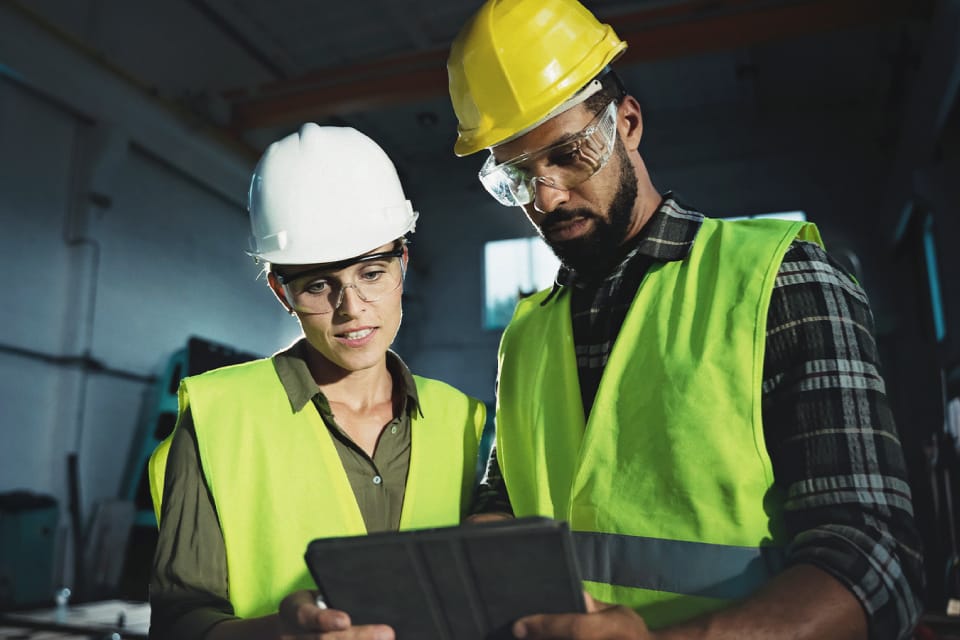
Detecting Impairment, Not History | How Safety Leaders Navigate Legalization | Risk Matrix Episode 117
THE RISK MATRIX Cutting-edge podcast on occupational safety and risk management. Hosted by industry titans: JAMES JUNKIN, MS, CSP, MSP,…

More advanced construction practices and industrial techniques have significantly impacted the roles and responsibilities of workers in recent years, with many of those new tasks exposing teams on the worksite to added risk. However, parallel advancements in safety technology should help mitigate those dangers, helping prevent any severe injuries and fatalities (SIFs) workers might otherwise suffer.
This article discusses seven advancements in safety technology that companies in all industries should be aware of and consider implementing.
Keeping track of remote workers in high-hazard jobs is essential for ensuring their safety and well-being. Monitoring remote worker locations and work activities allows for quick responses to emergencies and the ability to provide support when needed.
Some devices and technologies to track remote workers and provide real-time location to supervisors include GPS trackers in the form of:
Radio-frequency identification (RFID) tags can be attached to worker badges or equipment. RFID readers can track when workers enter or exit designated areas at specific locations. Bluetooth beacons can track the movement of workers within predefined zones.
These beacons communicate with smartphones or wearable devices, providing location information. The addition of geofencing creates virtual boundaries or zones on a map, and when a worker enters or exits a predefined area, supervisors are alerted.
Many GPS-tracked wearables discussed in Part 1 above can measure and report worker vitals.
For example, helmets with GPS, sensors, and communication capabilities provide real-time location data and biometric safety alerts. Individual badges, watches, and standalone air monitors can track worker exposures and vital signs – such as heart rate and body temperature- in real-time.
Fatigue monitoring solutions help mitigate the potential for injuries and fatalities in industries where workers take on long hours or night shifts. This safety technology bases its calculations on worker-specific data like sleep and work hours and can detect potential current fatigue using biological measures such as:
Impairment detection technologies and algorithms are on the rise to detect substances that are hard to see impairment factors in real-time, such as cannabis. Cannabis impairment detection technologies for cannabis primarily rely on relative reaction times on simple talent and cognitive tests and eye-tracking sensors that capture data and video and then analyze the data using machine learning.
Drones use cameras and GPS for aerial surveillance of remote work sites. They can capture images, video footage, and location data for safety monitoring. In addition, drones and UAVs can be deployed in high-risk areas to perform tasks and monitor location conditions, thus removing workers from harm’s way.
Over the last several decades, robots have taken over the accomplishment of various processes historically performed with human labor at significant risk. These tasks include:
Integrated digital platforms and software for safety management are becoming more prevalent within large corporations. These systems are evolving quickly by offering several new features, including the following:
Additionally, algorithms incorporated into digital platforms are rapidly advancing in such a way that predicting the potential for accidents or near misses using AI through automated decision-making.
Safety technology can help reduce human error and make workplaces safer. For safety professionals, these valuable tools can save time, reduce costs, and help keep workers avoid traditional high-hazard tasks out of harm’s way. The most effective way to use any new technology is to ensure that safety is integrated into management and work practices at all levels, addressing all types of work and hazards that affect workers, the public, and the environment from an organization’s operations.
Ultimately, the design and use of new technologies to reduce accidents, injuries, and illnesses will depend on the evolution risks in the industries in which we work, and the needs driven by society’s advancements. To keep up with what’s new – read, research, attend professional conferences, and connect with colleagues to ensure you know what is out there to address your safety and risk issues. It is certain that next year, at this time, we will have come a long way in risk reduction techniques and advancements to where we are now.
Contact us today to learn more.


THE RISK MATRIX Cutting-edge podcast on occupational safety and risk management. Hosted by industry titans: JAMES JUNKIN, MS, CSP, MSP,…

THE RISK MATRIX Cutting-edge podcast on occupational safety and risk management. Hosted by industry titans: JAMES JUNKIN, MS, CSP, MSP,…
We’ll send you practical and insightful supply chain risk management info that can benefit your business. Plus, important company updates that keep you in the loop.
